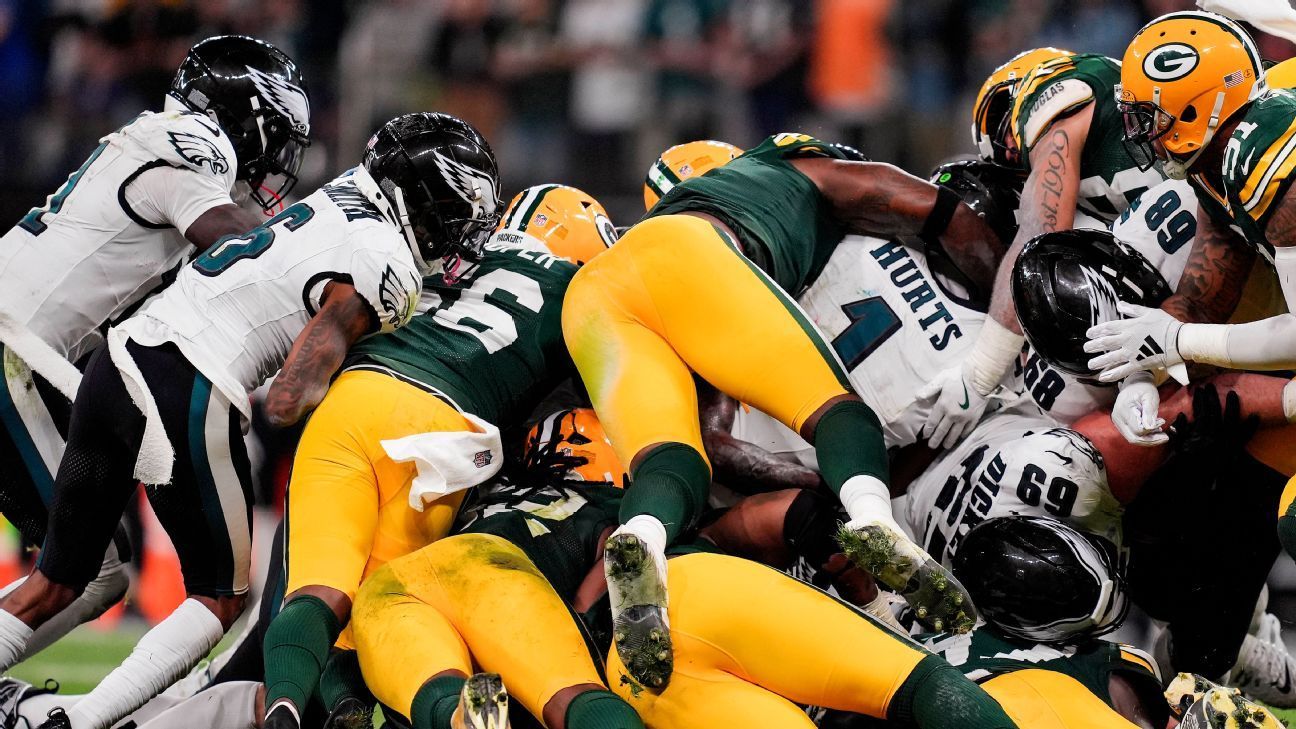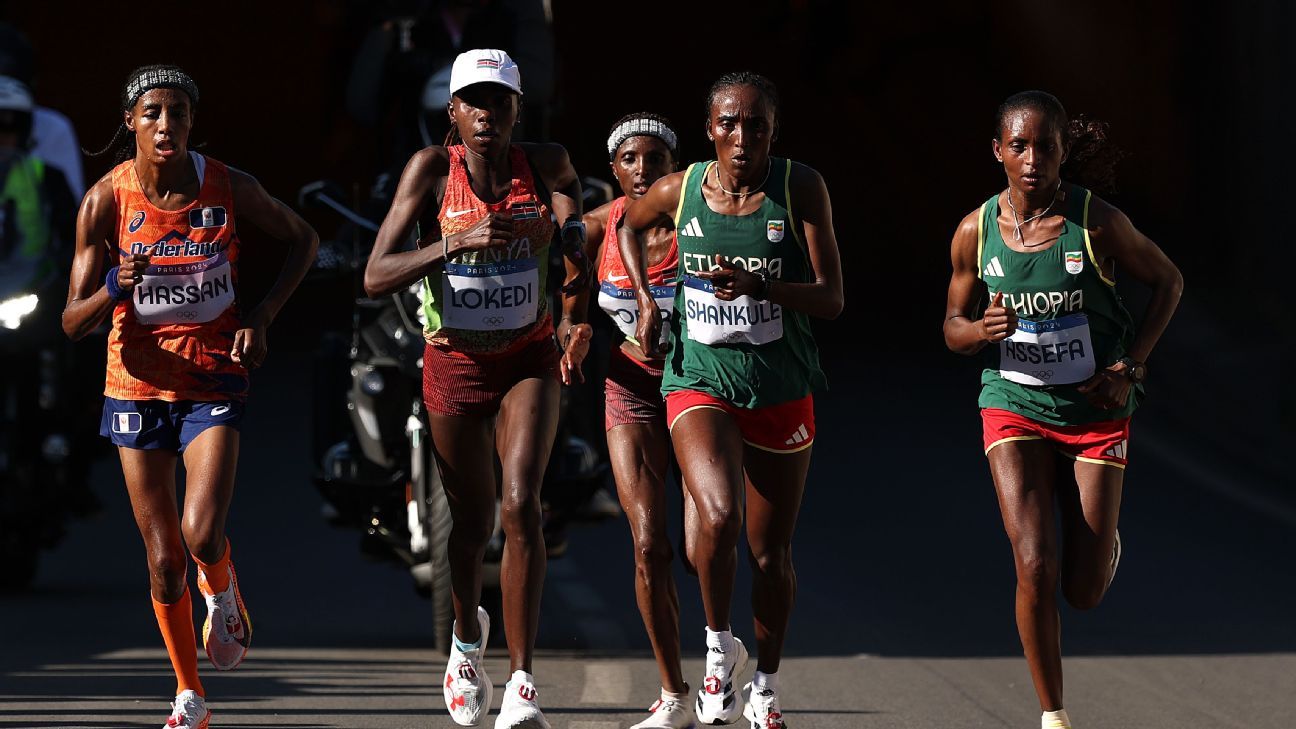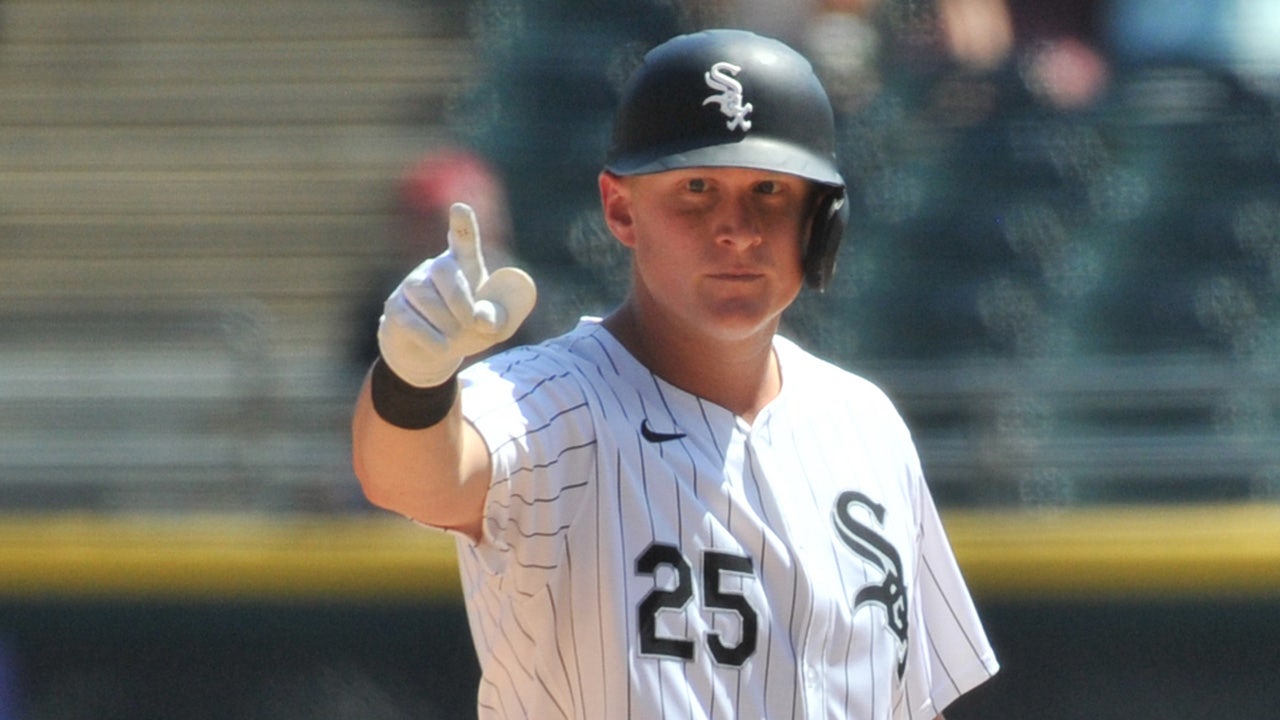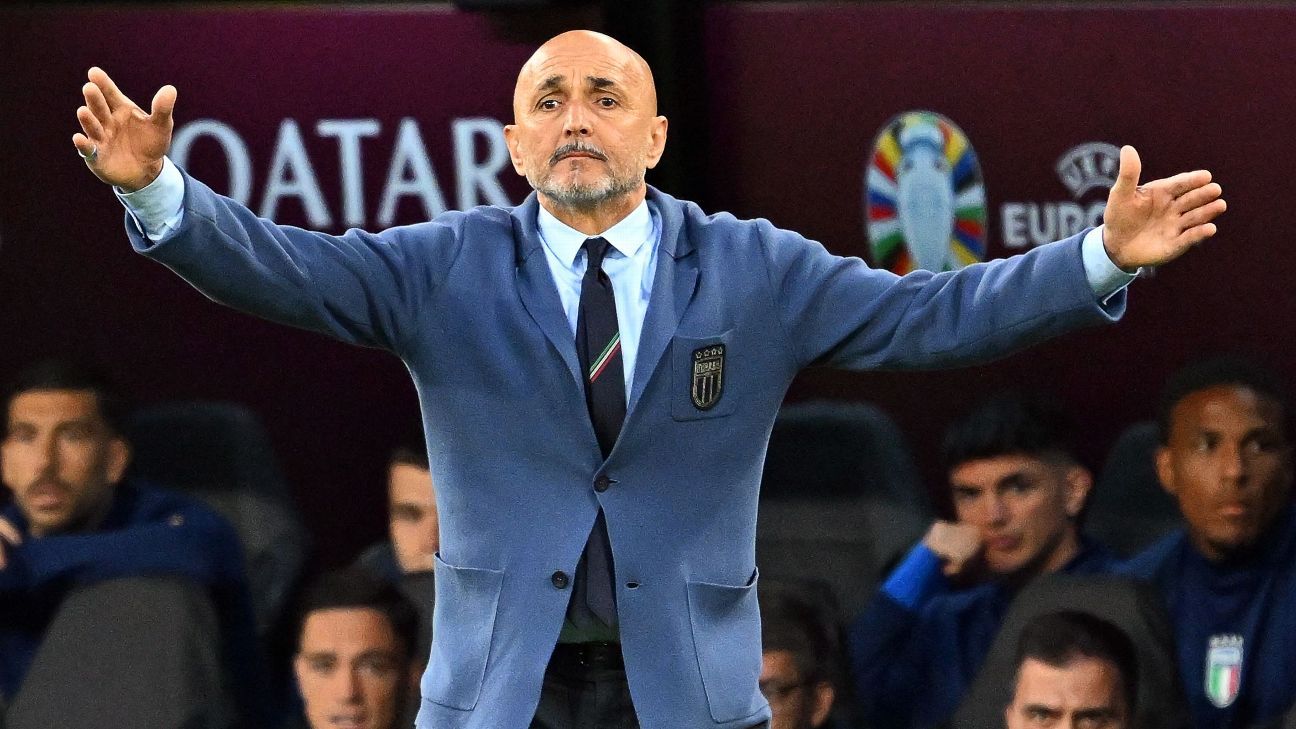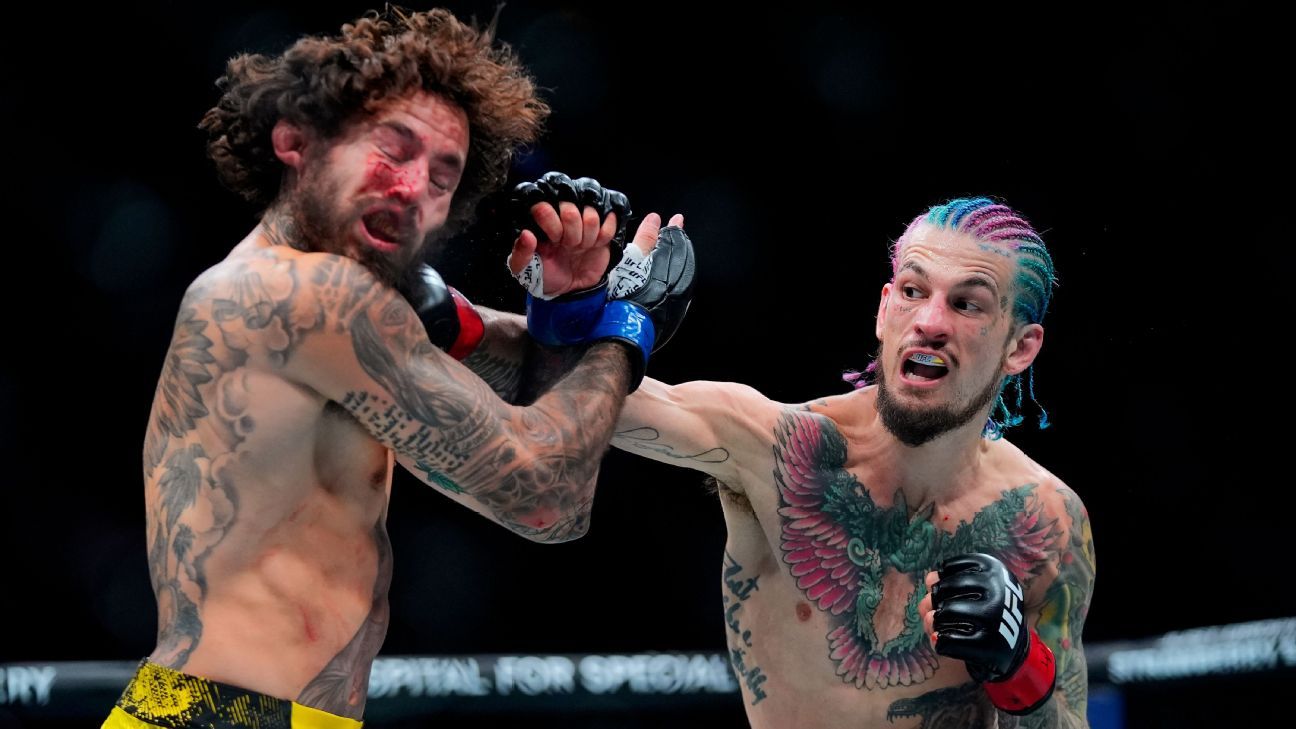The Philadelphia Eagles played their first game without future Hall of Fame center Jason Kelce last Friday (a 34-29 win over the Green Bay Packers in São Paulo, Brazil), but he couldn't stay away.
As Philadelphia, clinging to a two-point lead, reached the Packers' 1-yard line with 1:12 remaining, Kelce tweeted.
“Push to finish it!!!” he wrote on X.
Kelce, now an ESPN analyst on “Monday Night Countdown,” made the right call, but it didn't go the way it usually does for the Eagles. The exchange between new center Cam Jurgens and quarterback Jalen Hurts wasn't clean. The ball fell to the ground and an alert Saquon Barkley pounced on the loose ball to prevent a near-fumble.
Kelce's next post was Homer Simpson backing into the bushes and out of sight.
The “brotherly push” had modest success in Week 1. There were four attempts in total. Two failed, one was successfully converted, and the other led to an encroachment penalty on Green Bay that resulted in a first down for the Eagles.
So it's 50-50, which is below the lofty standards set by the team for this play. The Eagles have an 86% success rate (61 of 71) since they began running it in 2022, well above the league average of 76%.
“It's unstoppable,” quarterback Will Grier said. “I've seen them do it for two years.”
Well, it was.
The success rate has dropped a bit lately. The Eagles got a first down on 93% of their back-of-the-pack attempts in 2022 (25 of 27). In 2023, they used the play more and converted at an 83% rate (35 of 42).
It seems defenses are getting better at stopping the game. And now one of the all-time great center players is no longer at the center of Philadelphia's action.
One week is a very small sample size, but the results add to the curiosity surrounding one of the most discussed and debated plays in the NFL: What is the secret ingredient behind the butt push? And was Kelce the main ingredient all along?
THE BACK PUSH It's a simple play on the surface. It's a glorified QB sneak play, the only difference being that there are players lined up behind the quarterback (usually a running back and a tight end) who provide an extra dose of momentum by pushing the quarterback forward, and ideally through the scrum.
The Eagles boast one of the biggest offensive lines in football, with tackles Lane Johnson (6-foot-6, 325 pounds) and Jordan Mailata (6-foot-8, 365 pounds) and left guard Landon Dickerson (6-foot-6, 332 pounds) in the trenches. Add to that a former powerlifter in Hurts, who can squat more than 500 pounds, and now running back Saquon Barkley, who can bench around 600, and you have the makings of a potent short-yardage operation.
“It definitely helps how strong Jalen is and how strong I am and [tight end] Dallas [Goedert]”It's a great play,” Barkley said. “That play is going to be talked about for a long time and it's hard to stop, so we plan to continue to make it hard to stop.”
But there's more to the scientific equation than pure strength, and that's where Kelce comes in.
“Kelce did a great job of staying low consistently,” Johnson said. “I think that's why we had so much success – him and then our two guards and tackles sneaked in and made sure there were no leaks. He did a good job with his leverage and really knew how to execute. We're going to try to hold ourselves to the same standard as far as execution, but as you know, all the guys are doing well. [Eagles] “The team looks different, the players look different, so we still have to wait and see.”
The other key element, players say, is the desire to do it. Running headlong into a wall of humanity and being the shortest man in a pile of 300-plus-pound athletes is not for the faint of heart. The same iron-man spirit that helped Kelce set the franchise record for consecutive starts (156) allowed him to serve as the primary play-blocker time and time again.
“He was very game. Every time we did it, he would always say, 'Do we have to run? OK?' But when he did it, it was a full-speed play, 100 percent,” Mailata said. “We were going to get that first down.”
According to ESPN Analytics/NFL Next Gen Stats, Kelce had a 91% run-block win rate on QB sneaks last season, 16 percentage points higher than his overall run-block win rate in 2023 (75%).
The Eagles' overwhelming success in executing the butt push put the play in the spotlight and fueled debate over whether it belonged in the NFL.
Former Washington Commanders defensive coordinator Jack Del Rio said he would “like to see it eliminated” before the Commanders and Eagles played last season, calling it “a nice rugby play” but “not what we're looking for in football.”
The NFL's competition committee was “split” on whether to ban the play last season, according to Atlanta Falcons president Rich McKay, the committee's chairman. The NFL ultimately decided in March that the play would remain legal in 2024.
“The league still likes the play, which is shocking to some people,” referee Brad Allen said before the start of the season. “But the only thing that [the NFL] “What they'll tell us is that in that formation, when those running backs are bunched up so close, they want to make sure there's some space between them and the line of scrimmage. You can't put them right in the gaps because that creates an illegal formation. That's it. Other than that, they're good with the play, they're in good position with it.”
In addition to size, strength and leverage, repetition has been a boon for the Eagles. Their 71 rush attempts since 2022 are 41 more than the next closest team (Bills, 30).
“Obviously Kelce is a special player and Jalen is a strong guy, that certainly doesn't hurt, but compared to other teams I've been on, here they just know: It's fourth-and-1, third-and-1, they just commit to that,” Grier said.
THE LESS THAN-Friday's stellar start should be taken with caution, Kelce believes.
“I don't know if I'm the determining factor in the success of this,” Kelce said on his “New Heights” podcast, noting that the play was stopped during the team's playoff loss to the Tampa Bay Bucs in January. “First of all, it's a very difficult play to run when a lot of guys are running it for the first time. Once you've run it a couple times, you know how to run the quarterback sneak, you get into a rhythm and you understand how it's going to happen.
“And I think they had a new piece at center with Cam… and then Mekhi Becton being new obviously at right guard.”
The same goes for offensive coordinator Kellen Moore, “Based on the circumstances of that game, I think we have some great opportunities with the QB sneak element and keeping him as part of that package as we move forward.
“It's a very important play for us… It's a top-level play and we feel very comfortable with it.”
Jurgens, a second-round pick out of Nebraska in 2022, was one of Kelce's favorites coming out of that draft and has been groomed to be his successor. Given that he was in the film room with Kelce for two years and worked alongside him last season as the starting right guard, Jurgens feels prepared.
“That's the peak of the play, so obviously make sure you get the cadence, start with the snap, and it all starts with the center and the quarterback,” Jurgens said.
The turf at the Arena Corinthians in Sao Paulo was slippery, causing problems for players on both teams. Moore said there was “an element of slipping there” on the late goal attempt that ended in a fumble. Had the conditions been different, perhaps the success rate would have been different as well.
“You can only replicate that snap and the way it feels live,” Kelce said. “And the reality is you're leaning so far forward trying to get leverage that it's a very difficult snap to get to the quarterback if you're doing it right. I have to think, especially with the slick field, there were factors there that led to that fumble.
“I think the reality is that the more these kids practice, the more likely they are to get back to a 90 percent-plus success rate. That hasn't discouraged me at all.”

